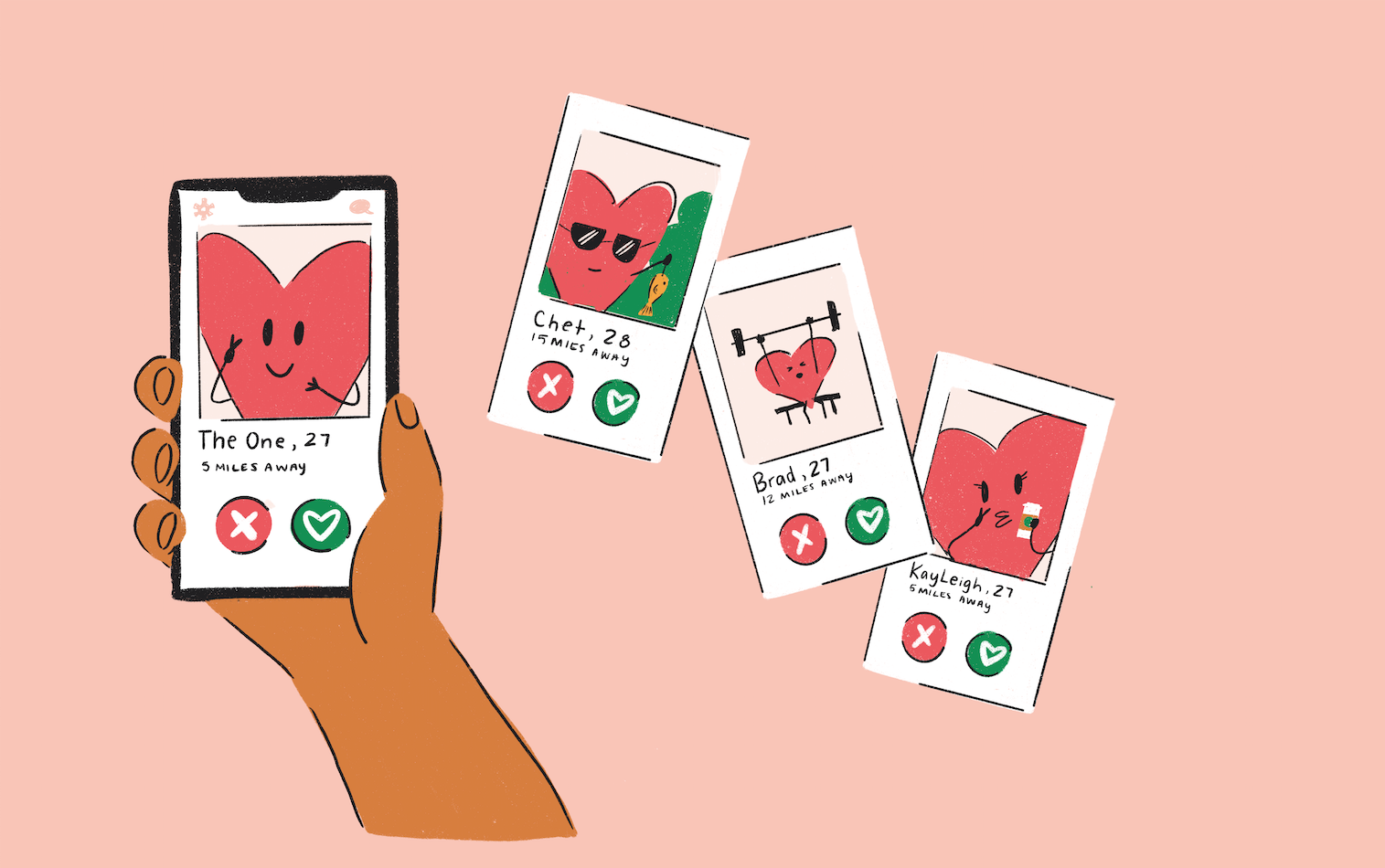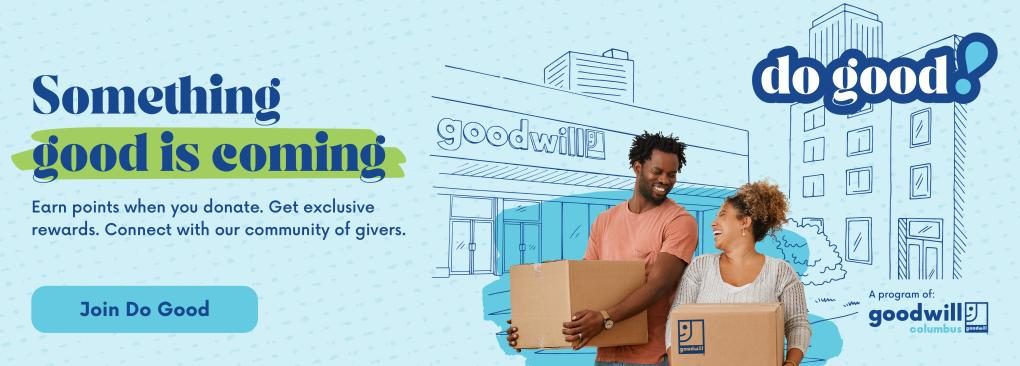When it’s right to swipe right: Examining apps as the modern matchmaker

Illustration by Sarah Moore
When you start digging into dating apps, you’ll find mixed reactions. One Google search result will show that a study from Stanford University found online dating has become the most popular way for folks to meet. And if you scroll down a little more, our very own Ohio State University published findings that compulsive dating app users tend to be more lonely. You win some, you lose some.
The truth is you get out what you put in when it comes to dating apps. For all the arguments against them, you can’t deny the convenience they afford our busy lives. You can start the week without a date and by Friday find yourself sipping a cocktail across from a new face. And for all the arguments for these apps, your entire idea of a potential partner can be based on a few photos and icebreaker conversation starters. In other words, you truly don’t know the person until you meet the person.
Dating apps in the modern age have taken to algorithms, much like streaming services today. Instead of suggesting music in your Spotify playlist and new Netflix recommendations, it’s new faces that you might be interested in based on how you complete your profile. But that’s just half the battle. Once you connect with someone, it’s up to you to navigate these waters and land yourself a date. We’re here to help, and we talked with a couple Columbusites who use various apps about what to expect.
Two dating apps that are currently popular are Hinge and Bumble. There are many similarities between the two apps; both will ask you to fill out your profile with the gender you identify with and your sexual preferences, along with photos of yourself. Then, you’ll answer questions that serve as icebreaker conversation starters with potential matches. These conversation starters are one of the key features of both apps, as they are creative and a good basis for getting to know someone with little information. Options can range from “First round is on me if…” or “A shower thought I recently had.” This is a good place to let your personality shine. Users advise that you keep it light, clever, and avoid referencing The Office.
“I’m a diehard Office fan, but if that’s all you can put in your profile about you, I already know you don’t have a personality beyond that,” said K. Coleman, a 24-year-old female user of dating apps. “I don’t care what you are watching on Netflix.”
BROUGHT TO YOU BY
Bumble differentiates itself from Hinge by serving as the Sadie Hawkins of dating apps, where women always initiate the conversation. It also utilizes the popular swipe feature where users simply swipe left to pass on someone and swipe right to say, “I’m interested!” Should you find success swiping, Bumble also features an “away” setting—kind of a pause button—which takes your profile off the market until you reactivate. For Spencer Swonger, a 29-year-old male, this feature can be less than ideal.
“What I didn’t know is when you come out of away mode, every person you matched with gets a notification like, ‘Hey, this person is back on Bumble,’ which to me sucks,” he said. “Even if I’m just casually doing it, I don’t want every person I’ve talked to to be like, ‘Oh, this guy is looking again.’”
On the other hand, Hinge takes more of a “ball is in your court” approach, where if someone likes your page, you can invite them to start a conversation. If someone comes across your feed and you are not interested, simply hit the “X” option and move right along. There’s also the “most compatible” feature, which looks at your history of likes and passes and how you interact on the app, and connects you with someone the algorithm thinks you’d really like. Additionally, your profile will eventually find its way into other users’ most compatible stream.
Swonger and Coleman both say Hinge and Bumble are the dating apps where they find themselves spending most of their time. Both picked them up after putting down Tinder, one of the most popular dating apps to date. Apps such as Tinder and its predecessor Grindr, a place for members of the LGBTQ+ community to connect for dates and meet-ups, introduced the swipe feature. Though Tinder is flooded with users, it’s gained something of a hook-up app connotation, and that is why Swonger and Coleman said they moved on from it.
“I did Tinder for maybe a week, maybe two,” Swonger explained. “With the other two, I have a lot more success meeting up with people or meeting people who are actually interested.”
Coleman said her preferred app is Bumble, because it empowers her to make connections with people that interest her. “You have to talk to them first, so it weeds out the creepy interactions, which is always nice for women,” Coleman explained. “I like the role-reversal in Bumble. While I think that men hold a significant power in the dating world, I don’t think they hold all of it.”
When it comes to actually holding a conversation on these apps, Coleman and Swonger agree: don’t play games. Swonger says he tries to keep his usage of the app to late in the day for up to 30 minutes at a time. If he connects with someone, he’ll strike up a conversation and see where it goes. Coleman echoed those sentiments and said she recognizes that when someone takes awhile to respond that you shouldn’t read into it too much, rather consider the hectic and busy lives we all lead. It’s worth remembering that these dating apps are built out of convenience, which looks different for everyone.
Swonger’s success on the apps has led him on as many as four dates a week. For him, the idea is to try to set something up in the physical world and get out of messaging mode. It’s also how he recommends new users utilize the apps. With the high volume of users on each app, the chances of meeting someone new are virtually endless. In his mind, it’s better to meet and get to know each other and then decide what—if anything— comes next.
“I actually just ran into a girl I went on a date with while I was out on another date and got a sour text from her the next day,” Swonger recalled. “But if I’m still on the dating app and haven’t deleted my profile, clearly I’m still out there.”
And that’s a good point to close this out: even with all his success, Swonger is still swiping away on these apps. The same can be said for Coleman. Both have found dates through the app and both are still searching. Rome wasn’t built overnight, and neither will a long-lasting relationship. Keep swiping, Columbus. Who knows who you may find?
BROUGHT TO YOU BY




